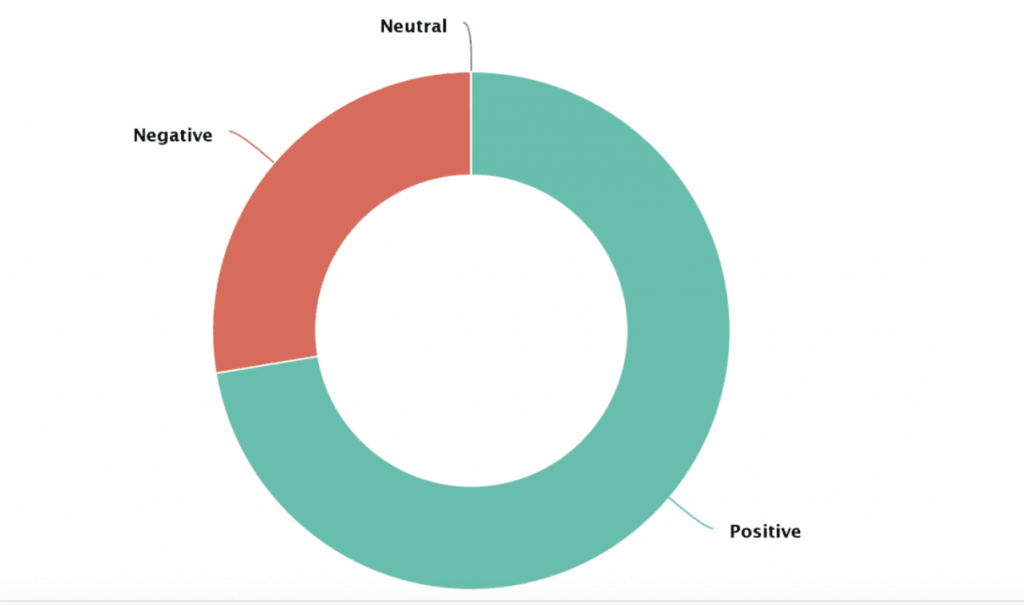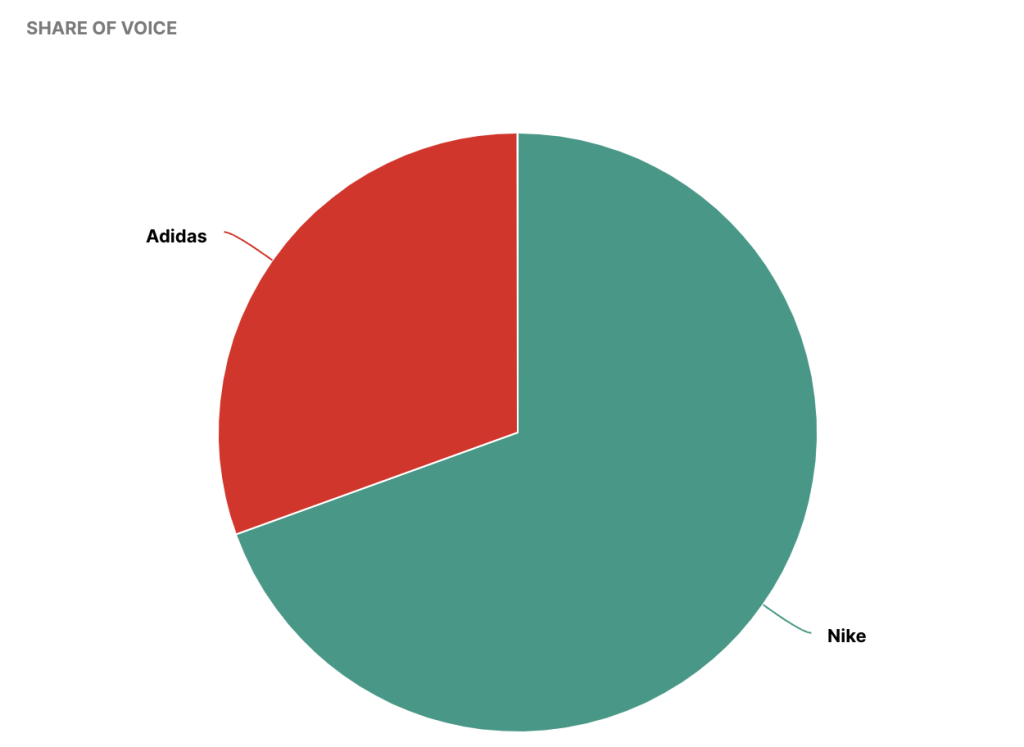Earned media value (EMV) is a metric that helps marketers determine how much their various social media content and associated actions are worth. It’s like the return on investment (ROI) of word-of-mouth marketing, going beyond just measuring engagement.
? Read Digital PR Explained: Best Strategies and Tools
Have you ever wondered how to measure earned media value effectively and why is it so important to your campaign activities? Look no further to learn about EMV in greater detail so you can decide for yourself whether or not it truly demonstrates the impact of your marketing efforts.
What is Earned Media
We must first explain why earned media is so important and should be taken seriously in order to gain a complete picture of your business. In contrast to paid media or owned media, earned media relies on third-party content to spread the word about your brand.
Simply put, earned media is the good or bad coverage you have “earned” as a brand. This type of content can therefore include infographics based on your own data or content contributed by your experts.
Similarly, earned media can also consist of discussions on forums, opinions, reviews, as well as social media posts and comments from your customers about your brand.
? In short, earned media is any content that mentions your brand, product, or service outside of the channels you already operate on.
As this content is shared by existing clients, fans of the brand, and users, it helps establish relative trustworthiness in the eyes of potential customers. Rather than being convinced by ads or commercials, people are more likely to buy products based on the recommendations of friends or experts.
This proves how vital earned media is to your business, by supporting the process of shaping and strengthening your brand awareness.
Read What Is Shared Media and Why It Matters for Your Brand
So, what is earned media value?
? Earned media value (EMV) is a way of measuring the ROI of content gained through public relations (PR) and marketing activities.
EMV can serve as a helpful metric since it allows marketers to assign a numerical value to their efforts, providing better insight into how their campaigns are performing.
Unfortunately, this metric also has one notable downside. Many marketers believe that EMV is very subjective because there is no one standardized way to calculate it across the entire industry.
How to Calculate Earned Media Value?
The hardest part is now ahead, which is deciding how to calculate your earned media value.
While there are many ways to determine a value for this metric depending on campaign goals, content type, or communication channels, here is one of the most common formulas:
EMV = impressions x CPM x adjustment variable
Let’s go through this formula step by step:
Impressions
This is the number of digital views of a piece of content. Impressions indicate how often your content and media have appeared in audiences’ newsfeeds. For example, on social media, each time someone views an advertisement may be counted as an impression for that ad.
Note that impressions do not include user actions such as interacting with an ad or clicking on a link.

CPM
Cost per mille / thousand (CPM) is the amount you pay to display media or content on a given platform every time 1,000 impressions are generated. CPM can be calculated as follows:
CPM = 1,000 x cost / total impressions
Note that you can substitute this value when computing CPM if you know how many impressions you currently receive.
For example, if you have 10,000 impressions and you invest $10 in advertising fees, your CPM is 1,000 x $10 / 10,000 = $1 per every 1,000 impressions.
Adjustment variable
You can see the problem with measuring the earned media value right here. How to know which variable to take into account? The key is choosing the metric used to align the results with the rest of the data gathered by your PR/marketing department.
Depending on your marketing and public relations activities, the adjustment variable changes. There is a risk that adding extra numbers may make your figures look more impressive without providing actual value to your organization. Furthermore, using different factors makes it difficult to benchmark campaign results.
How should you evaluate the results then?
There is no one way to analyze EMV. It’s a subjective metric, so its value will mean different things to different brands. So how is your business negatively affected if your EMV is unsatisfactory (and vice versa)?
A low EMV often indicates problems with the brand’s image or marketing decisions. A high EMV, on the other hand, means that the brand makes meaningful connections with its audience and should keep at it.
Is it Possible to Measure EMV Easily?
The good news is that yes, there is a way. The only thing you’ll need to do is use a media monitoring tool.
Such tools provide a new method for analyzing your EMV more effectively. You will gain insight into metrics that enable you to spot mistakes, improve your public relations and marketing strategies, plus fine-tune your performance.
Where to begin? Choose a media monitoring tool that best suits your needs. We can’t stop ourselves from listing the advantages of Determ here:
- Tracks 100+ million online sources 24/7
- Provides real-time alerts and tracks mentions in any country or language
- Easy to use and launch
- Has insightful, ready-made reports that help you to predict what will happen in the future
- Compare your results with the competition
- Helps you find social media influencers that will have an actual impact on your brand

And what’s most important is that Determ streamlines your work and reduces your required effort to the absolute minimum.
Metrics for Measuring EMV
When it comes to earned media value, a media monitoring tool can help you track the progress of three different types of metrics that together give you a holistic view of where your EMV is at. Here’s an overview of each one.
1. Sentiment
Sentiment analysis is one of the most important metrics that you should keep an eye on. It helps you understand what emotions your brand evokes and how your customers perceive it.
You might assume that the traditional EMV formula shows that a particular piece of content was a success because it was widely shared. However, this could turn out to actually be far from the truth. Instead, the feedback received about it was rather on the negative side, and the brand’s reputation was hurt.
Since it is very difficult (if not impossible) to check and evaluate every mention, a media monitoring tool can be of great help in preventing such mistakes from occurring. Such a tool will automatically determine whether the sentiment of each mention is positive, neutral, or negative.
As a result, it is possible to focus only on opinions that are relevant to your brand’s image and identify any negative ones if and when they arise.
Read All You Need to Know About Brand Sentiment Analysis

2. Engagement
Engagement metrics provide insights into how earned content resonates with the target audience and how valuable it is to them.
In terms of earned media value, the engagement metric is crucial. Content that is targeted at a smaller audience but is more engaging is far more valuable than that which reaches a broad yet uninterested group of people.
Keeping track of engagement regularly may not correlate directly with sales. However, by monitoring it regularly, you can see how effectively your strategy is working and identify components that could be improved or replicated.
3. Share of Voice
Share of voice (SOV) illustrates your place on the market and shows how you rank against your competitors. You can use it to put earned media campaign results into context and know whether or not it generates satisfying results.
Read Share of Voice: How to Track It and Why

Influencer marketing also falls under the earned media category, and media monitoring tools provide SOV insights that let you know the results of such influencer marketing activities. In this way, you will be able to measure the impact of your collaboration with a particular influencer and decide whether further cooperation makes sense or not.
Does Earned Media Value Really Matter?
In today’s marketing environment, paid marketing campaigns have been trumped by the power of earned media. As a result, marketers are constantly trying to garner attention from their target audiences. But in a world where everyone has a voice, it’s not easy to get noticed.
Earned media campaigns occur more often than ever and are capable of reaching new heights if carried out strategically. That’s why EMV is a metric that is being increasingly used by brands.
Nevertheless, earned media value and marketers have a love-hate relationship. On one hand, EMV helps measure media mentions, but on the other, it doesn’t actually prove the success (or failure) of their efforts. Despite its flaws, earned media value remains a metric that is worth considering.
In our opinion, the key is to use EMW along with different metrics that together give you the big picture of a campaign’s results.
To Sum Up
Although earned media value is difficult to quantify, you shouldn’t be discouraged from incorporating this type of content into your marketing strategy.
Earned media has the power to engage an audience, impart value, and increase credibility. Set realistic goals and expectations and make use of a media monitoring tool, then you’ll soon see that EMV is nothing to worry about any longer.



